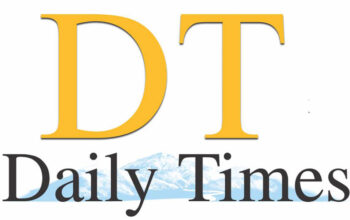Complete independence cannot be achieved without economic stability. These words have never sounded truer.
A few months ago, Pakistan was under the International Monetary Fund’s (IMF) 9-month Stand-By Arrangement (SBA). Its completion allowed Islamabad to pass a crucial milestone.
However, right after it ended, talk gathered momentum that Pakistan would still need another bailout.
What followed was a larger and more comprehensive 37-month USD 7 billion Extended Fund Facility (EFF) programme. Its staff-level agreement was inked on July 12 and Executive Board approval came later.
Later in September, the first tranche of over USD 1 billion was received by the State Bank of Pakistan (SBP).
The government expectedly lauded the development as the release of funds boosted the country’s foreign exchange reserve position, and restored some confidence among its bilateral and multilateral lenders.
Soon enough, Finance Minister Muhammad Aurangzeb in a key presser stated that Pakistan economy’s “DNA needed to be fundamentally changed” to ensure that the latest IMF agreement was the country’s last.
“Bringing structural reforms is not just an IMF requirement, but Pakistan needs it,” the minister reaffirmed, reflecting on the urgent need for changes that go beyond short-term fixes.
Aurangzeb also noted early signs of recovery, citing a decline in inflation and an improved foreign exchange position.
Indeed, the CPI inflation rate in Pakistan has declined significantly in recent months, falling from a record 38% witnessed in May last year to 6.9% registered in September 2024.
Last month’s reading was lowest recorded in the last 44 months, according to Pakistan Bureau of Statistics (PBS) data on Tuesday.
However, delving deeper into this current inflation trajectory, it becomes evident that the seeds of this were planted last year, when the then interim government kicked off measures to stabilise the exchange rate through key interventions, such as imposing import restrictions and curbing smuggling.
These measures have played a crucial role in shaping inflationary trends as “inflation is closely tied to the exchange rate”. When the local currency depreciates, inflation rises, and when it appreciates, inflation decreases.
On the other hand, other experts were of the view that the decline in inflation was due to a high-base effect and in absolute terms, prices remain significantly high.
Analyst Iqbal Javaid from Arif Habib Limited, while terming the decline “a good recovery”, attributes much of the inflation rate reduction to a decline in international oil prices.
However, the analyst expressed concern about the significant risks posed by oil price volatility, which is expected to surge due to geopolitical tensions, particularly in the Middle East and the ongoing Russia-Ukraine conflict could disrupt the current downward trajectory of inflation, creating challenges for maintaining economic stability.
Meanwhile, taking advantage of the downward inflationary trend, the State Bank of Pakistan (SBP) has already initiated its monetary easing cycle, lowering the policy rate from a record high of 22% to 17.5%, with experts projecting a further decline in the upcoming Monetary Policy Committee (MPC) meeting.
Credit should be given to the authorities as stabilisation measures have worked to an extent. However, it is high time that the government now shifts its focus to reducing the recurring fiscal deficit to create room for development spending.
“The government now needs to pursue fiscal consolidation to improve the economy,” say experts.
“In the past, the government has relied on its allied partners including the United States, China, and Middle Eastern nations to meet its funding needs.”
On the other hand, Pakistan remains engulfed with critical issues which remain to be addressed, said experts.
For example, there are concerns that the government’s earlier demand-crushing measure, including exorbitant increase in electricity price, may hamper its ambitious tax revenue target, which was evident after the Federal Board of Revenue (FBR) suffered a massive shortfall of over and above Rs87 billion in tax collection during the first quarter (July-September) 2024-25.
Thus, instead of barging the already crippled salaried class with more taxes, the authorities must chalk in a more effective policy which involves targeting the untaxed sectors to achieve its said targets.
Also to note were the latest figures issued by the National Accounts Committee (NAC), which revealed that Pakistan’s economy grew by 3.07% during the fourth quarter of last fiscal year.
However, the growth has come largely on the back of agriculture as NAC’s data revealed that industrial activity contracted 3.59% during the three-month period, which was this sector’s third contraction on a quarterly basis during the fiscal year.
The regular notices of local companies shutting down or downsizing their operations reflect the sorry state of affairs in this sector.
Therefore, to spur industrial growth, the government must bring the cost of doing business under control, especially energy prices need to be reduced significantly, in order to make our industrial output competitive.
Concerns also linger about the government’s drive to privatise State-Owned Entities (SOEs), as the IMF’s key demand remains stalled. The privatisation of Pakistan International Airlines Corporation Limited (PIACL) continues to face further delays due to investor concerns.
As a result, the bidding deadline was extended to October 31, 2024,
Although the seeds of change have been sown, bold and sustained actions are necessary to truly break free from the cycle of short-term fixes. For the decision-makers in Islamabad, balancing fiscal responsibility with growth initiatives will be critical for Pakistan.
The article does not necessarily reflect the opinion of Business Recorder or its owners
Read the full story at the Business Recorder - Latest News website.

